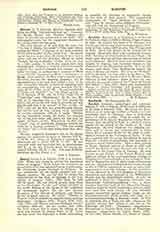

Banduri, ANSELMO, archaeologist and numismatologist, b. 1671 at Ragusa, off the coast of Dalmatia; d. at Paris, January 4, 1743. He joined the Benedictines at an early age, studied at Naples, and was eventually sent to Florence, then a flourishing center of higher studies. Here he made the acquaintance of the famous Benedictine scholar Montfaucon, then travelling in Italy, in search of manuscripts for his edition of the works of St. John Chrysostom. Banduri rendered him valuable services and in return was recommended to Duke Cosmo III as a proper titular for the chair of ecclesiastical history in the University of Pavia. It was also suggested that the young Benedictine be sent to Paris for a period of preparation, and especially to acquire a sound critical sense. After a short sojourn at Rome, Banduri arrived at Paris in 1702 and entered the Abbey of Saint Germain des Pres, as a pensioner of the Grand Duke of Tuscany. He soon became an apt disciple of the French Maurists and began an edition of the anti-iconoclastic writings of Nicephorus of Constantinople, of the writings of Theodore of Mopsuestia, and of other Greek ecclesiastical authors. Banduri never published these works, though as late as 1722 he announced, as near at hand, their appearance in four folio volumes. In the meantime, he was attracted by the rich treasures of Byzantine manuscript and other material in the Bibliotheque Royale and the Bibliotheque Colbert. In 1711 he published at Paris his “Imperium Orientale, sive Antiquitates Constantinopolitanal”, etc., a documentary illustrated work on the Byzantine Empire, based on medieval Greek manuscripts, some of which were then first made known. He also defended himself successfully against Casimir Oudin, an ex-Premonstratensian, whose attacks were made on a second-hand knowledge of Banduri’s work. In 1718 he published, also at Paris, two folio volumes on the imperial coinage from Trajan to the last of the Palaeologi (98-1453), “Numismata Imperatorum Romanorum a Trajano Decio usque ad Palaeologos Augustos” (supplement by Tanini, Rome, 1791). Of this work Father Eckhel, S.J., prince of numismatologists, says (Doctrina Nummorum I, cviii) that it contains few important contributions. At the same time he praises the remarkable bibliography of the subject that Banduri prefixed to this work under the title of “Bibliotheca nummaria sive auctorum qui de re nummaria scripserunt”, reprinted by Fabricius (Hamburg, 1719). In 1715 Banduri was made an honorary foreign member of the Academy of Inscriptions, and in 1724 was appointed librarian to the Duke of Orleans; he had in vain solicited a similar office at Florence on the death of the famous Magliabecchi.
MAURICE M. HASSETT

